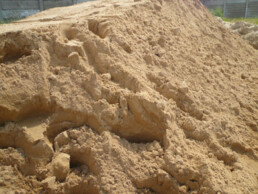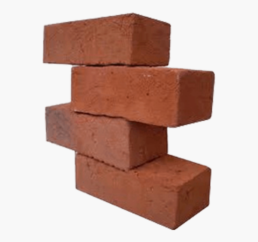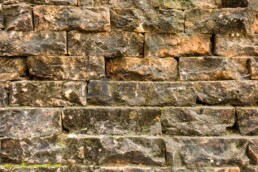Limult Survey Plans
A land survey represents pictorially the legal boundaries and dimensions of a surveyed parcel of land. It identifies the type and location of monuments or survey posts set in the ground to define the boundaries of the parcel. Some types of survey plans are subdivision plan, reference plan, posting plan, air space plan or strata plan.
Survey plans are prepared by professional Limult land surveyors for filing in a land title office. Many historical survey plans are available only in hardcopy format.
A plan is a technical and legal document prepared by a registered cadastral surveyor.
A plan is considered current until a new survey has been conducted and registered for the subject lot, and a new title issued. The certificate for each lot in Limult refers to the current survey plan. A plan may be the current plan for some of the lots shown on the plan, but other lots may have been cancelled by a newer plan. This may mean that a current plan of a lot could be from the 1900s, whereas the current plan for a nearby lot may be either newer or older.
A survey plan does not include building location unless the property is a building unit. For more information on buildings, contact the relevant local government.
Survey plans do not contain land contours. A registered surveyor can create these plans for you.
A current plan of a lot may not show easements, leases or covenants as such interests may have been created by a different survey plan.
Reading a survey plan
A survey plan will include bearings, distances and area for all parcels covered by the survey plan. Sometimes the measurements for an individual parcel are not included. This occurs where the dimensions of one parcel are the same as the adjacent lots (e.g. if lots 1 to 20 are all the same size, the dimensions may only be shown on lot 1).
A survey plan does not include the measurements from the kerb to the property boundary.
Depending on when the survey was conducted, the information recorded on the plan may vary.
For example:
- Some older plans may include roman numerals, notes and annotations, or the word 'road' when the road had not been named at the time of survey.
- A survey plan may also include old street names.
- Historical survey plans may include county prefixes and prefix abbreviations.
- Depending on the age of a plan, dimensions may be recorded in a number of formats and you may need to convert from imperial to metric.
Contact us
If you need a survey plans service or you have questions about survey plans, Feel free to visit our store at www.limult.com/shop For further inquiries, call us on +2347052446249.
Limult Plaster Sand
Plaster Sand not only can be used to make plaster but it can also be used in a cement/sand/gravel mix to make concrete. Use Plaster Sand to set pavers, or fill in holes and low spots in your lawn.
Plastering is one of the most ancient building techniques. Evidence indicates that primitive peoples plastered their reed or sapling shelters with mud, thus developing more durable structures and more effective screens against vermin and inclement weather. More lasting and slightly materials in time replaced mud. Some of the earliest plastering extant is of a quality comparable to that used in modern times. The pyramids of Egypt contain plasterwork executed at least 4,000 years ago that is still hard and durable. The principal tools of the plasterer of that time were in design and purpose like those used today. For their finest work the Egyptians used a plaster made from calcined gypsum that is identical to plaster of Paris.
Plaster as a medium of artistic expression waned by the 19th century, when imitation and mechanical reproduction displaced this creative art. However, as a surface material for interior walls and ceilings and to a lesser degree for exterior walls, plaster remains in common use. It facilitates cleanliness and sanitation in building and is a retardant to the spread of fire.
which sand is best for plastering?
Sand is a naturally occurring granular material composed of finely divided rock and mineral particles. It provides the structure of plaster, and the quality of your sand can make the difference between success and failure.
Basically river sand are used for any plastering work. Generally, in any plastering work plasterers are used natural sand, crushed stone sand or crushed gravel sand. Though, there is a grading limit of sand which are used in plastering work. Other types of sand will also work, but it could be more expensive to use.
Limult Group sells quality plaster sand for strong housing construction_ thus providing for the nation. Feel free to visit our store at www.limult.com/shop to see more products that we make available for the people. For further inquiries, call us on +2347052446249.
BRICKS BY SHAPES
In the history of professional construction practices, brick is one of the oldest of all building materials. It is also arguably the most durable since there are brick walls, foundations, pillars, and road surfaces constructed thousands of years ago that are still intact. Today, bricks are most often used for wall construction, especially as an ornamental outer wall surface.
Brick Defined
Officially, the term brick is used to denote a building unit made of shaped clay, but in modern times it is used to refer to any stone- or clay-based building unit that is joined with cementitious mortar when used in construction. Typically, bricks are about 4 wide, 8 inches long, with a variety of thicknesses. Larger stone- or clay-based building units of the type used in foundations are usually called blocks.
How Bricks Are Categorized
There are several ways that brick can be categorized. For example, you can divide brick into the types used for facing (exposed and visible on the exterior of a structure) vs. backing bricks (which are used structurally and are hidden from view). Another means of categorizing brick is according to how they are manufactured: unfired (brick that is air-cured) and fired (brick that is baked in ovens to harden it). Bricks can be also categorized according to their typical use: common bricks or engineering bricks. For purposes of residential construction, it is usually common bricks that are of most interest, since engineering bricks are more often used in civil engineering projects, such as road or bridge construction, or sewers construction.
Bricks can also be categorized according to their shape. Some common shapes include:
- Brick veneers: These bricks are thin and used for surface cladding.
- Airbricks: These bricks contain large holes to circulate air and lessen weight. They are used on suspended floors and cavity walls.
- Perforated bricks: These bricks contain many cylindrical holes drilled throughout the brick. They are very light in weight.
- Bullnose brick: These are bricks moulded with round angles.
- Paving bricks: These bricks contain a good amount of iron. They are used in underfoot paving applications.
- Capping bricks: These bricks are used to cap the tops of freestanding walls.
- Hollow bricks: About one-third of the weight of the normal bricks, these are used mostly in partition walls where load-bearing is not required.
Brick wallpaper the new water
Adding brick wallpaper is the best interior design you can do to your house. You can add the wallpaper to all the four walls of your room or have one feature wall, which will have the different brick wallpaper designs. Brick wall wallpaper has been properly developed to become an authentic charm, which is now been witnessed in inner-city apartments and also rural cottages. This is so because brick style wallpaper complements both modern and traditional furniture perfectly. Due to this, brick wallpaper is the ideal choice when looking for an interior design guaranteed to be the talking point amongst your guests.
Categorizing Bricks by Raw Materials
In modern construction practices, bricks are categorized according to their component materials and method of manufacture. Under this classification, there are five common types:
- Burnt clay bricks
- Sand lime bricks (calcium silicate bricks)
- Concrete bricks
- Fly ash clay bricks
- Firebrick
Burnt Clay Bricks
Burnt clay bricks are the classic form of brick, created by pressing wet clay into molds, then drying and firing them in kilns. This is a very old building material—the type of brick found in many of the ancient structures of the world. In appearance, these bricks are solid blocks of hardened clay, usually reddish in color.
Burnt clay bricks are typically sold in four classes, with first-class offering the best quality and most strength. These high-grade burnt clay bricks have no noticeable flaws, but they’re also going to cost more.
When these bricks are used in walls, they require plastering or rendering with mortar. Uses for burnt clay bricks include:
- Masonry walls
- Foundations
- Columns
Sand Lime Bricks
Sand lime bricks (also known as calcium silcate bricks) are made by mixing sand, fly ash and lime. Pigments may also be added for color. The mixture is then molded under pressure to form bricks; the materials bond together by a chemical reaction that occurs as the wet bricks dry under heat and pressure. These bricks are not, however, fired in kilns in the same manner as burnt clay bricks. Sand lime bricks can offer some advantages over clay bricks such as:
- Their color appearance is gray instead of the regular reddish color.
- Their shape is uniform and presents a smoother finish that doesn’t require plastering.
- These bricks offer excellent strength for load-bearing structures.
- When pigments are added, the bricks can be used for ornamental purposes.
- Less mortar is required during construction.
- Edges are straight and precise, making construction easier.
- Bricks do not effloresce salts and minerals.
The uses for sand lime bricks include:
- Structural foundations and walls
- Exposed brick walls and pillars
- Ornamental uses (when pigments are added)
Concrete Bricks
This types of bricks are made from solid concrete and are growing in popularity among homeowners. Concrete bricks are usually placed in facades, fences, and provide an excellent aesthetic presence. These bricks can be manufactured to provide different colors if pigments are added during production. Concrete bricks should not be used in below-ground applications.
Common uses for concrete bricks include:
- Fences
- Internal (hidden) brickwork
Fly Ash Clay Bricks
Fly ash clay bricks are byproduct of coal burning—fired at about 1,000 degrees C. Because a high volume of calcium oxide, this type of brick is sometimes described as self-cementing, since it expands when exposed to moisture. This tendency to expand, however, can also produce pop-out failure. Fly ash clay brick has the advantage of being lighter in weight than clay or concrete brick.
Typical uses for fly ash clay brick include:
- Structural walls
- Foundations
- Pillars
- Anywhere that improved fire resistance is required
Fire Bricks
Also known as refractory bricks, these are manufactured from specially formulated earth with a high aluminum oxide content. After burning, these bricks can withstand very high temperatures without their shape, size, or strength being affected.
Common used for this type of brick include:
- Lining of chimneys and furnaces
- Pizza ovens and outdoor brick barbecues




